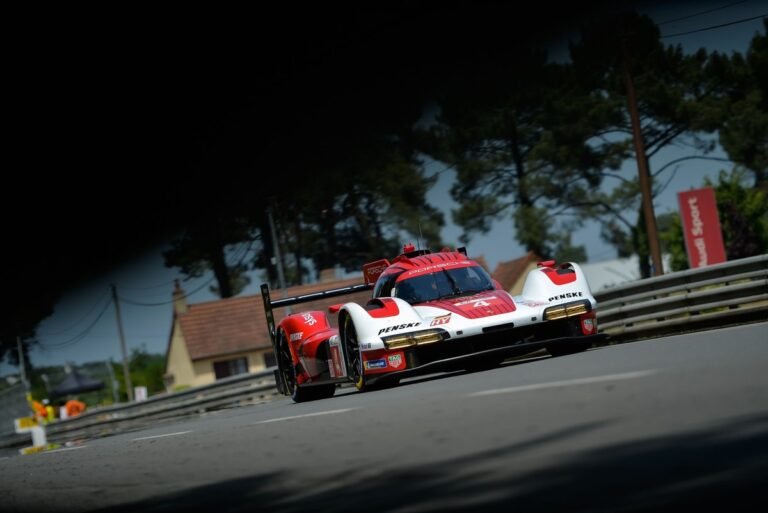LMDh Braking Systems: A Technical Overview
In the world of LMDh racing, mastering the braking system is as critical as harnessing the power of hybrid technology. LMDh vehicles employ both conventional hydraulic brakes and advanced brake-by-wire systems, akin to those found in Formula 1. Notably, Bosch’s Electronic Braking System (EBS) manages the complex interplay between friction, regenerative, and engine braking, asserting a substantial influence on race strategies.
Technical Insights
The LMDh braking architecture incorporates hydraulic front brakes, while the rear utilizes the EBS to control regenerative braking from the Motor-Generator Unit (MGU). According to Jordan Krell, senior calibration engineer for Bosch Motorsport, “The pressure-based system allows OEMs significant flexibility in developing braking strategies.” This capability enables teams to tune their settings for various conditions, a sentiment echoed by Porsche Penske Motorsport driver Felipe Nasr, who highlights the adaptability needed in varying grip levels and track evolution.
Adjustable brake bias remains a crucial feature, allowing teams to balance front and rear braking force. This function is particularly important during weight transfer on braking, which can affect vehicle stability and handling—the extremes resulting in either oversteer or understeer. Krell notes, “Dynamic brake bias on the pressure side supports teams in optimizing their braking strategies.”
Advancements and Features
A significant innovation is the brake migration shaping, which adjusts brake bias based on the vehicle’s dynamic states—both longitudinal and lateral. This feature is key for drivers seeking optimal control during corner entry, tailored through cockpit adjustments.
The EBS constantly balances braking forces across the rear axle, blending friction and regenerative energy. While there’s no cap on regenerative braking levels, the MGU’s capacity is limited to approximately 180 kW (241 hp). Krell emphasizes, “The integration of braking strategies allows teams to manage battery state of charge (SoC) effectively throughout a race stint.”
In extreme braking zones, such as turn one at Indianapolis, regenerative braking can constitute a notable percentage of overall braking forces.
Driver Experience and Challenges
The effectiveness of LMDh braking systems hinges on driver sensibility and confidence. Nasr articulates a common challenge with brake-by-wire systems—maintaining consistent feedback. “While hydraulic braking allows for clear feedback like tire lock-up, brake-by-wire needs careful tuning to minimize interference," he states.
Initial complexities in integrating hybrid technology posed significant hurdles, even for experienced constructors like Porsche. Stefan Moser, technical director of the Porsche LMDh program, remarked on the unforeseen intricacies involved in adapting hybrid elements into racing dynamics: "We realized that the differences in implementation required a complete rethink of our integration strategy."
As LMDh teams prepare for an evolving competitive landscape, the intricacies of braking systems will continue to play a pivotal role in race performance, testing both engineering acumen and driver skill to an elite degree.
Conclusion
LMDh racing serves as a proving ground for advanced braking technologies, introducing both complexity and potential for performance enhancement. With ongoing developments, teams will be tasked with fine-tuning their strategies to master this dynamic aspect of racecraft, reflecting the increasing sophistication of modern motorsport engineering.



